Photograph by Ing-On Vibulbhan-Watts
I went to Thailand to visit my family for two months, from July and August 2017. I did not visit home since 2006. I was glad to see my family. I enjoyed seeing all new development in Bangkok and loved eating authentic Thai food, especially Thai fruits.
I had a chance to visit my home town, Lopburi, where I was raised when I was young, before we moved to Bangkok. I traveled to Ayutthaya to see the ruins of temples that were burned by Burmese soldiers, when the Burmese wanted to take over Thailand, The Burmese–Siamese War (1765–1767). Ayutthaya was one of the former capitals of Thailand before moved to, Thonburi and then Bangkok. I also traveled to, Chiang Mai, located in the Northern part of Thailand. Chiang Mai is the second largest and second most popular city of Thailand.
John, my husband came to Thailand in August. He joined me traveling to different part of Thailand. I had a good time taking videos and photographs wherever I traveled around Bangkok and other part of Thailand. I hope the viewers of my website will enjoy the photographs that I present in these projects.
Ing-On Vibulbhan-Watts, Thursday, October 26, 2017
The Erawan Shrine, Bangkok, Thailand
“The shrine is located by the Grand Hyatt Erawan Hotel, at the Ratchaprasong intersection of Ratchadamri Road in Pathum Wan district. It is near the Bangkok Skytrain‘s Chitlom Station, which has an elevated walkway overlooking the shrine. The area has many shopping malls nearby, including Gaysorn, CentralWorld and Amarin Plaza.
Five other shrines dedicated to Hindu deities are located in the area as well: Phra Laksami (Lakshmi), Phra Trimurati (Trimurti), Phra Khanet (Ganesha), Phra In (Indra), and Phra Narai Song Suban (Narayana on his garuda).[2][3][4]”
For more information please visit the following link:
https://en.wikipedia.org/wiki/Erawan_Shrine
The Erawan Shrine, Bangkok, Thailand
“The Erawan Shrine was built in 1956 as part of the government-owned Erawan Hotel to eliminate the bad karma believed caused by laying the foundations on the wrong date.
The hotel’s construction was delayed by a series of mishaps, including cost overruns, injuries to laborers, and the loss of a shipload of Italian marble intended for the building. Furthermore, the Ratchaprasong intersection had once been used to put criminals on public display.
An astrologer advised building the shrine to counter the negative influences. The Brahma statue was designed and built by the Department of Fine Arts and enshrined on 9 November 1956. The hotel’s construction thereafter proceeded without further incident.[5] In 1987, the hotel was demolished and the site used for the Grand Hyatt Erawan Hotel.[6]”
The Worshipers at the Erawan Shrine, Bangkok, Thailand
“Erawan Shrine in Bangkok is Brahman, not strictly Buddhist. And yet, this famous shrine attracts more visitors than many of the city’s temples. It was erected during the mid 1950s, after the Thai government had decided to build the luxury Erawan Hotel on this location. However, the first stages of the construction were beset with so many problems that superstitious labourers refused to continue unless the land spirits were appeased. After consultations with astrologers, the erection of a shrine to honour the four-faced Brahma God, Than Tao Mahaprom, was considered to be an auspicious solution. A magnificent image of the Brahma God was especially cast and gilded, and The Erawan Hotel opened to acclaims and worldwide fame for three decades. Towards the end, the property could not compete with more modern facilities, and was replaced by the privately owned Grand Hyatt Erawan Bangkok in 1991. As the shrine was originally constructed to grace the old Erawan Hotel, the location became known as the Erawan Shrine.”
The worshipers pay the dancers to dance for the Brahma God at the Erawan Shrine, Bangkok, Thailand
“Than Tao Mahaprom is a Brahma god, full of kindness, mercy, sympathy and impartiality. These four virtues are represented by his four faces, each radiating serene grace. Since Buddhism in Thailand has always been influenced by the Brahma beliefs, he made an immediate impact. Nowadays, as has been the case for years, unending streams of people pay respects from early morning till late at night. Thais, and even foreign visitors, make ceremonial offerings from floral garlands, fruits to teakwood elephants in the hope that their wishes will be fulfilled. Judging from the flowing multitude of believers, for many those wishes were indeed granted. Cash contributions are managed by a foundation who distributes funds regularly to various charitable organisations and equipment for needy hospitals in the provinces. To feel the aura of reverence while watching the joyful celebration of a graceful Thai Classical Dance troupe or a lively Chinese Lion Dance is an experience to be added to your many memories of exotic Bangkok.”
For more information please visit the following link:
https://www.bangkok.com/shrines/erawan-shrine.htm#


 The Thai Classical dancers dance for the Brahma God at the Erawan Shrine, Bangkok, Thailand
The Thai Classical dancers dance for the Brahma God at the Erawan Shrine, Bangkok, Thailand
Photograph by Ing-On Vibulbhan-Watts
“Dance in Thailand (Thai: ????? ram Thai) is the main dramatic art form of Thailand. Thai dance, like many forms of traditional Asian dance, can be divided into two major categories that correspond roughly to the high art (classical dance) and low art (folk dance) distinction.”
For more information please visit the following link:
https://en.wikipedia.org/wiki/Dance_in_Thailand
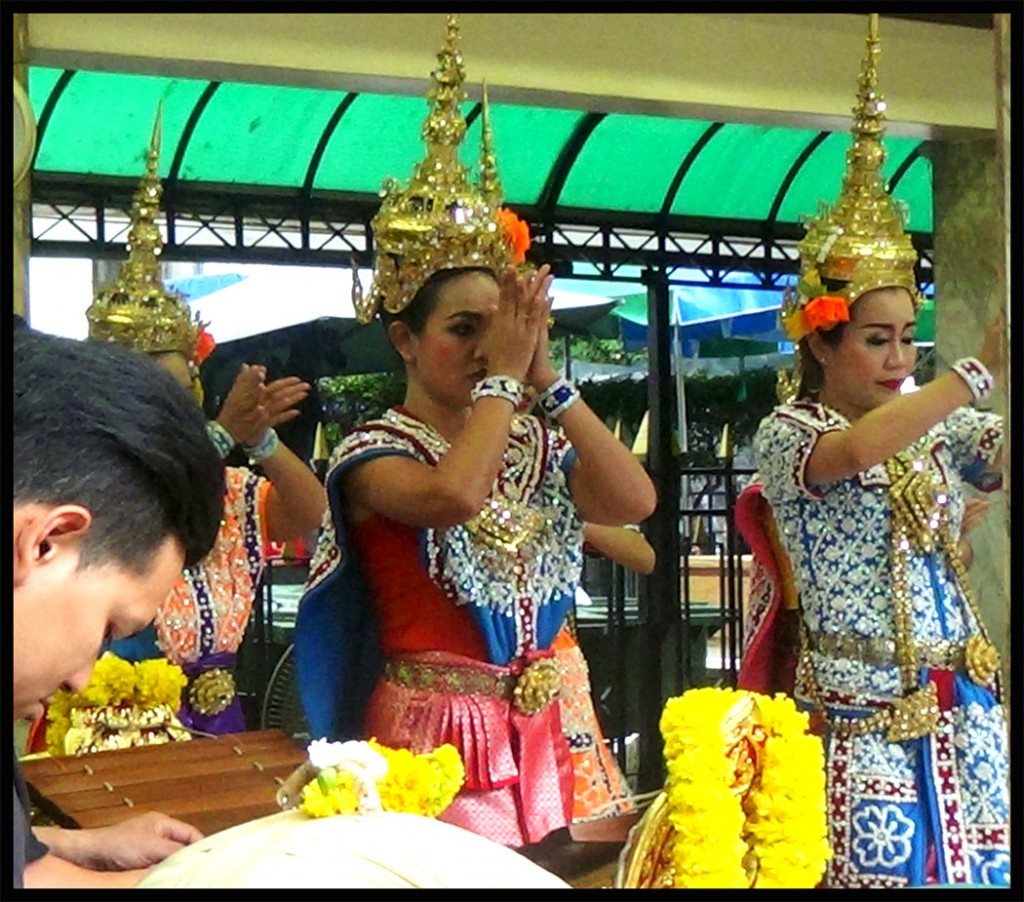 The Thai Classical dancers dance for the Brahma God at the Erawan Shrine, Bangkok, Thailand
The Thai Classical dancers dance for the Brahma God at the Erawan Shrine, Bangkok, Thailand
“Thai classical dance drama include khon, lakhon, and fon Thai.
The first detailed European record of khon and other Thai classical dances was made during the Ayutthaya Kingdom. The tradition and styles employed are almost identical to the Thai traditions we still see today. Historical evidence establishes that the Thai art of stage plays were already perfected by the 17th century. Louis XIV, the Sun King of France, had a formal diplomatic relation with Ayutthaya’s King Narai. In 1687, France sent the diplomat Simon de la Loubère to record all that he saw in the Siamese Kingdom and its traditions. In his famous account Du Royaume de Siam, La Loubère carefully observed the classic 17th century theatre of Siam, including an epic battle scene from a khon performance, and recorded what he saw in great detail:[1]:4”
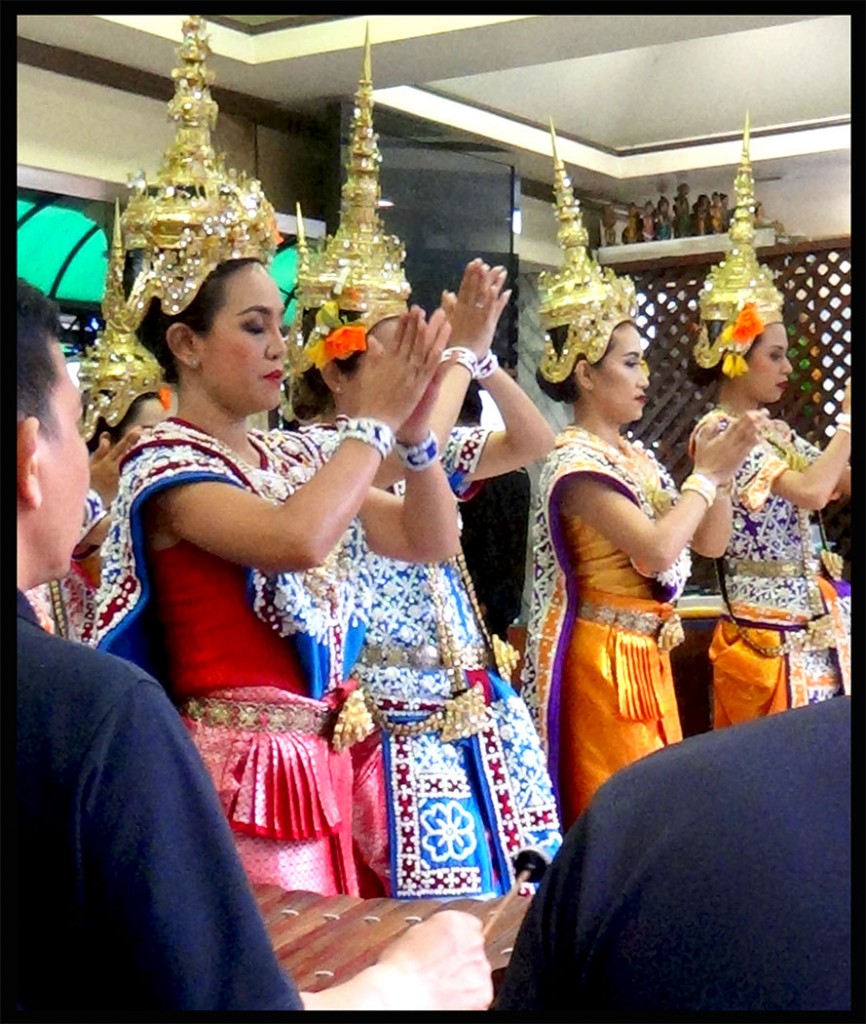 The Thai Classical dancers dance for the Brahma God at the Erawan Shrine, Bangkok, Thailand
The Thai Classical dancers dance for the Brahma God at the Erawan Shrine, Bangkok, Thailand
Photograph by Ing-On Vibulbhan-Watts
“The Siamese have three sorts of Stage Plays: That which they call Cone [khon] is a figure dance, to the sound of the violin and some other instruments. The dancers are masked and armed, and represent rather a combat than a dance. And though everyone runs into high motions, and extravagant postures, they cease not continually to intermix some word. Most of their masks are hideous, and represent either monstrous Beasts, or kinds of Devils. The Show which they call Lacone is a poem intermix with Epic and Dramatic, which lasts three days, from eight in the morning till seven at night. They are histories in verse, serious, and sung by several actors always present, and which do only sing reciprocally…. The Rabam is a double dance of men and women, which is not martial, but gallant … they can perform it without much tyring themselves, because their way of dancing is a simple march round, very slow, and without any high motion; but with a great many slow contortions of the body and arms.”
For more information please visit the following link:
https://en.wikipedia.org/wiki/Dance_in_Thailand
A Worshiper and the Thai Classical dance for the Brahma God at the Erawan Shrine, Bangkok, Thailand
“Thai classical dance drama include khon, lakhon, and fon Thai.
Of the attires of Siamese khon dancers, La Loubère recorded that: “[T]hose that dance in Rabam, and Cone, have gilded paper-bonnets, high and pointed, like the Mandarins caps of ceremony, but which hang down at the sides below their ears, which are adorned with counterfeit stones, and with two pendants of gilded wood.”[1]:49
La Loubère also observed the existence of muay Thai and muay Lao, noting that they looked similar (i.e., using both fists and elbows to fight), but the hand-wrapping techniques were different.[1]:49
The accomplishment and influence of Thai art and culture, developed during the Ayutthaya Period, on neighboring countries was evident in the observation of Captain James Low, a British scholar of Southeast Asia, during the early Rattanakosin Era:
“The Siamese have attained to a considerable degree of perfection in dramatic exhibitions — and are in this respect envied by their neighbours the Burmans, Laos, and Cambojans who all employ Siamese actors when they can be got.”[2]”
For more information please visit the following link:
https://en.wikipedia.org/wiki/Dance_in_Thailand
The musicians and the Thai Classical dancers dance for the Brahma God at the Erawan Shrine, Bangkok, Thailand
“Thai classical dance drama include khon, lakhon, and fon Thai.
Khon is the most stylized form of Thai dance. It is performed by troupes of non-speaking dancers, the story being told by a chorus at the side of the stage. Choreography follows traditional models rather than attempting to innovate. Most khon performances feature episodes from the Ramakien. Costumes are dictated by tradition, with angels, both good and bad, wearing coloured masks.”
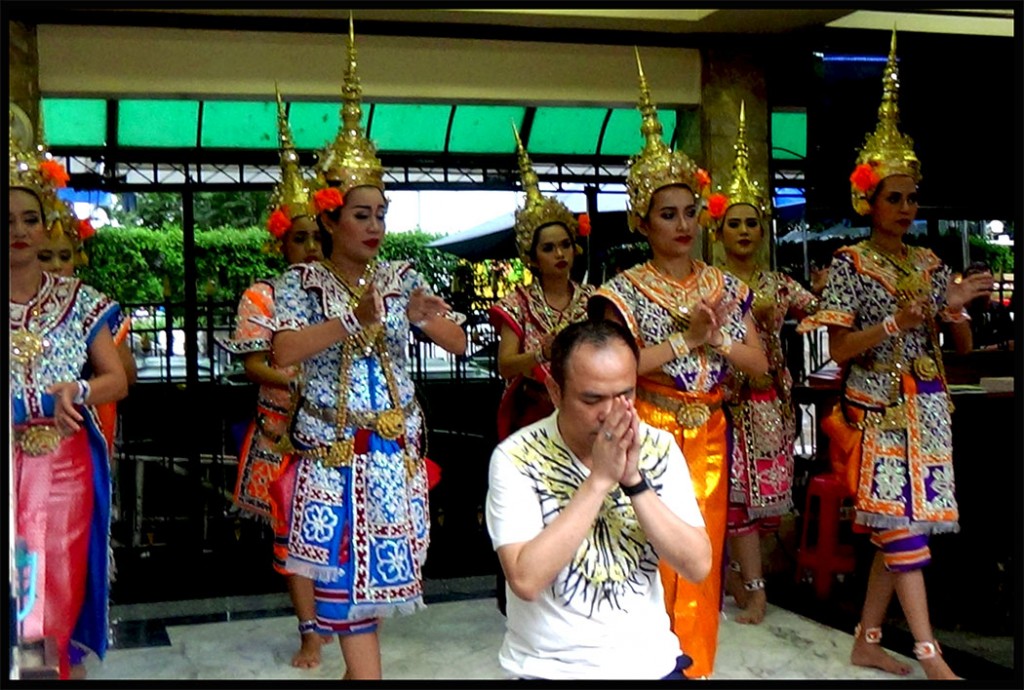
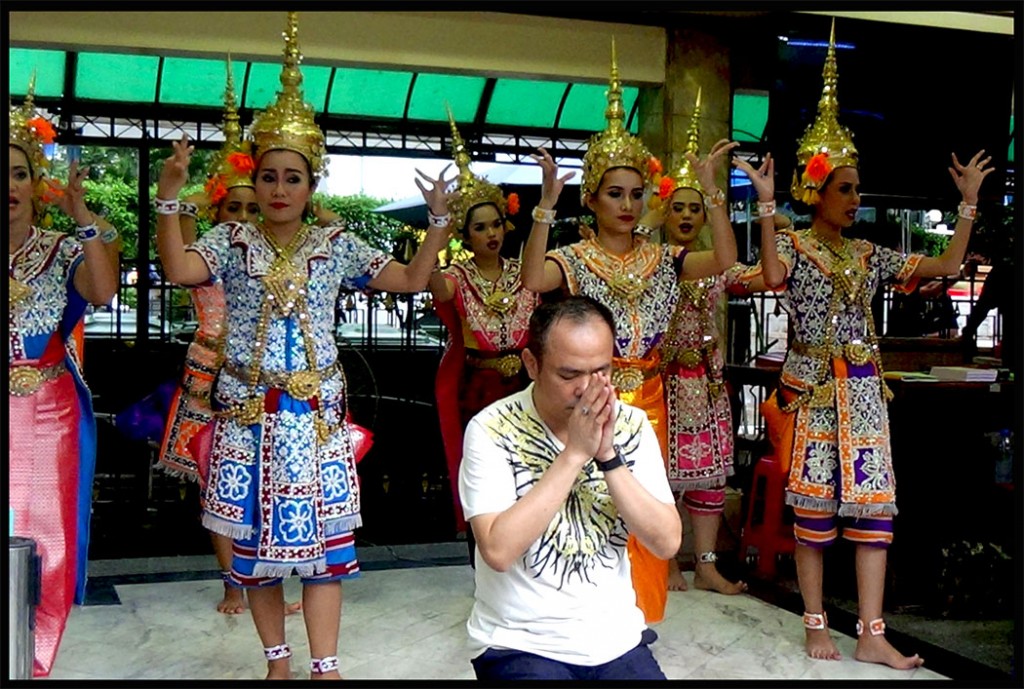 A Worshiper and the Thai Classical dancers dance for the Brahma God at the Erawan Shrine, Bangkok, Thailand
A Worshiper and the Thai Classical dancers dance for the Brahma God at the Erawan Shrine, Bangkok, Thailand
Photograph by Ing-On Vibulbhan-Watts
“Thai classical dance drama include khon, lakhon, and fon Thai.
Lakhon
Main articles: Lakhon nai, Lakhon chatri, and Lakhon nok
Lakhon features a wider range of stories than khon, including folk tales and Jataka stories. Dancers are usually female and perform as a group rather than representing individual characters.”
For more information please visit the following link:
https://en.wikipedia.org/wiki/Dance_in_Thailand
The Thai Classical dancers dance for the Brahma God at the Erawan Shrine, Bangkok, Thailand
“Thai classical dance drama include khon, lakhon, and fon Thai.
Fon (Thai: ????; rtgs: fon) is a form of folk dance accompanied by the folk music of the region. The first fon originated in the northern region of Thailand. It was designed and taught by Chao Dararasami of Chiang Mai. Since then, a variety of fon came into practice, featuring the music and style of each province, such as the fon lep (Thai: ????????; rtgs: fon lep) fingernail dance from Chiang Mai, fon ngiew from Chiang Rai with the influence of Burmese music and costume.
Fon Thai is divided into three types:
- Fon lep (fingernail dance): A northern Thai dance style. Each dancer wears six inch long brass fingernails. The long fingernails accentuate the finger movement of each dancer. Dancers wear their hair in a chignon-style with a yellow jasmine flower tiara.
- Fon tian (candle dance): A performance consists of eight dancers, each carrying candles. Dancers are in pairs, one pair to each side. They wear full-length sarongs and jackets with a matching shoulder cloth. This dance is always held at night.
- Fon ngiew (scarf dance): A dance performed at a happy event. The dance is similar to the fon lep but the dance is faster and more fun. Each dancer wears a yellow flower tiara, jong kra bane, and sabai.”
For more information please visit the following link:
https://en.wikipedia.org/wiki/Dance_in_Thailand
Photograph by Ing-On Vibulbhan-Watts
The Thai musicians perform at the Erawan Shrine, Bangkok, Thailand
“Thailand Instruments
There are many different varieties of Instruments from Thailand. They have 3 families of instruments, the wind, percussion, and string instruments. There are 2 main types of string instruments, plucked and bowed. The Percussion family is separated into 3 main groups, the drums, keyboards, and gongs or cymbals. Also, many Thai instruments are very similar, just in different sizes to produce higher or lower pitches.
The Ranat Ek has a similar look to xylophones. The keys from the ranad ek do not touch the base of the instrument, but rather hang over it, similar to a suspension bridge. The keys are wooden, and are different sizes in order to make different sounds.”
Welcome To My Beloved Country, Thailand
Photograph by Ing-On Vibulbhan-Watts
The Thai musicians perform at the Erawan Shrine, Bangkok, Thailand
“Thailand Instruments
The Taphon is a percussion instrument that is often found in a percussion ensemble called a piphat. The Taphon has two heads, and is shaped like a barrel. It is played with your hands, not with mallets. Many taphons have designs woven into the middle of the barrel.”
For more information please visit the following link:
https://thailandmusicproject.weebly.com/thailand-instruments.html
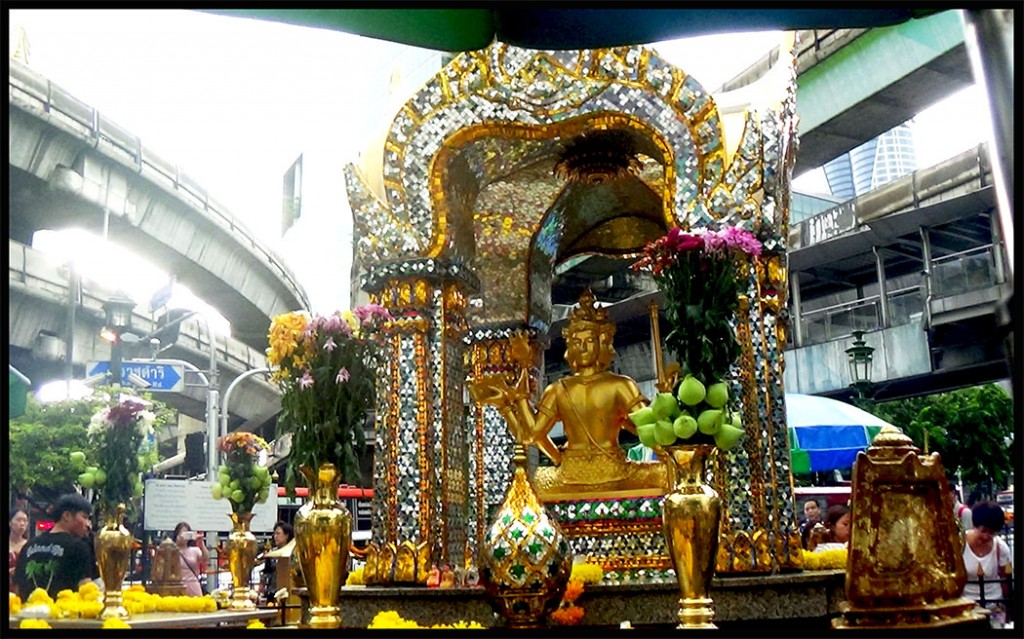
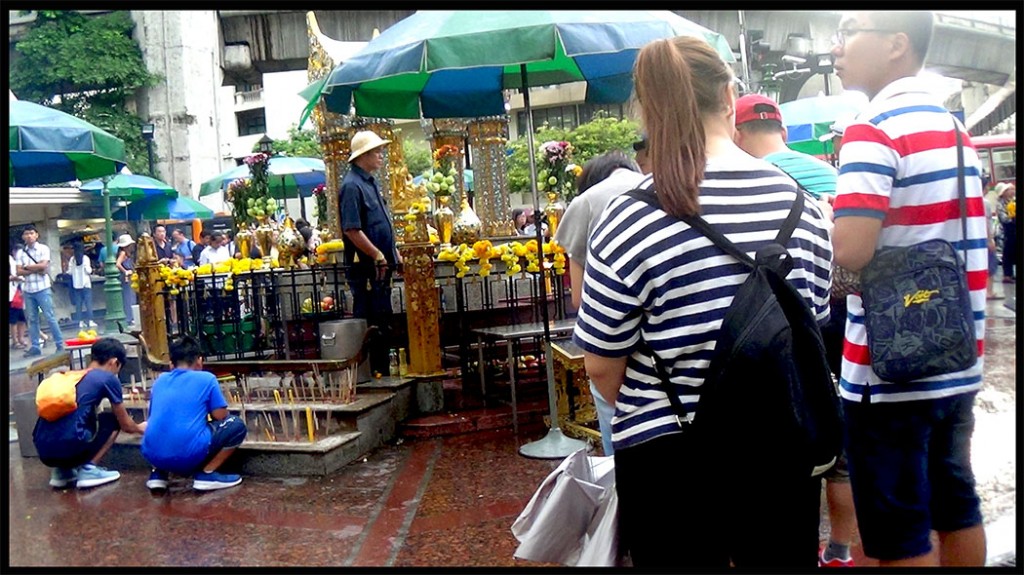

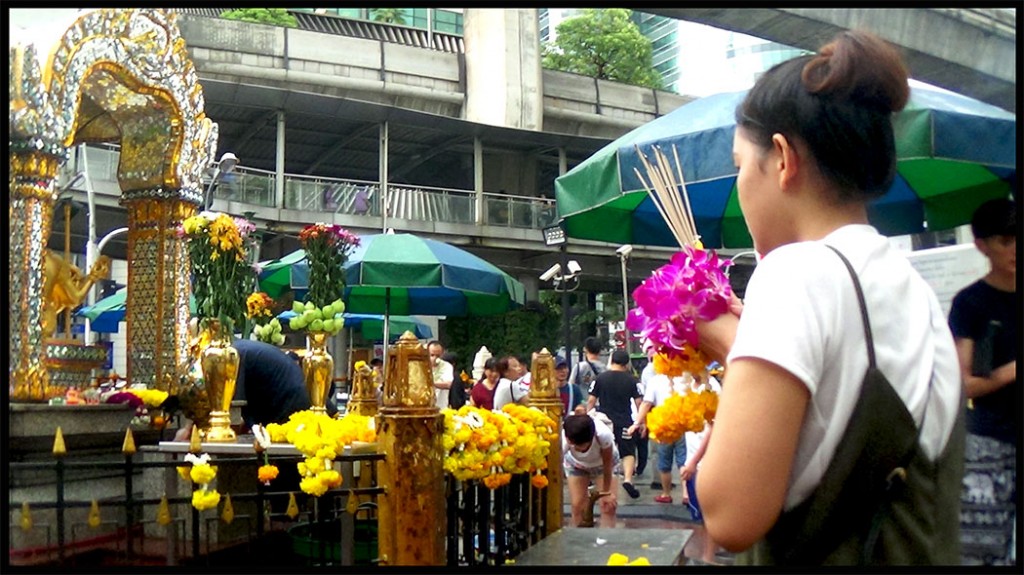
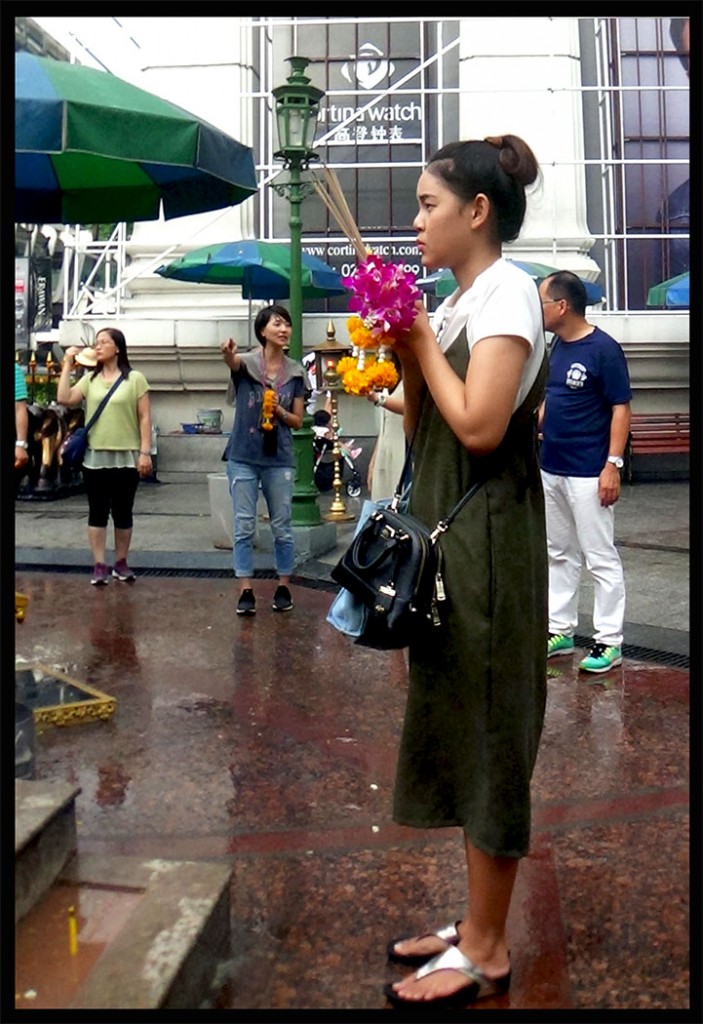
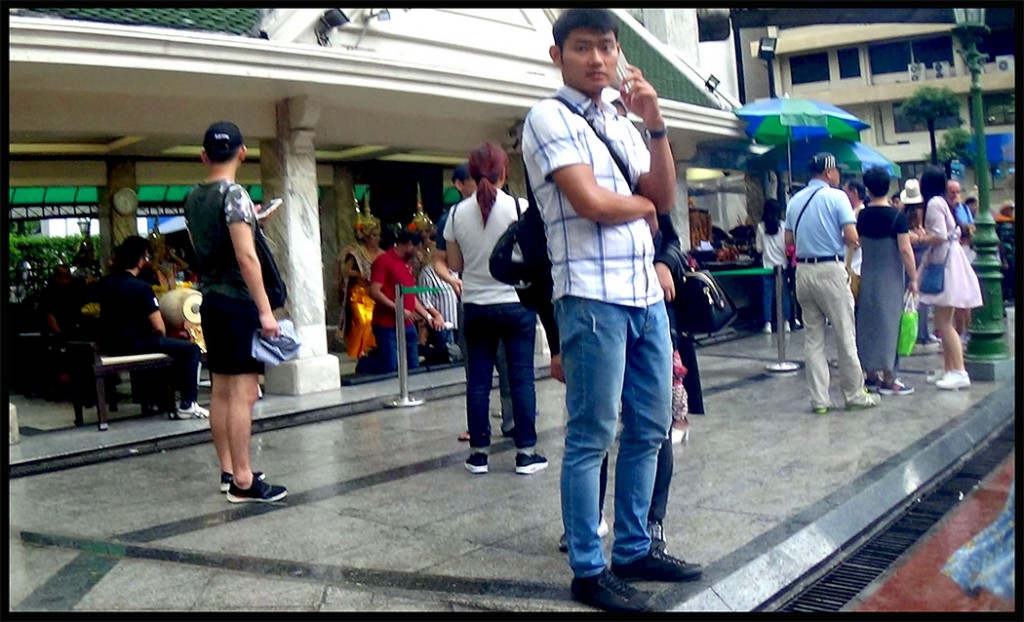
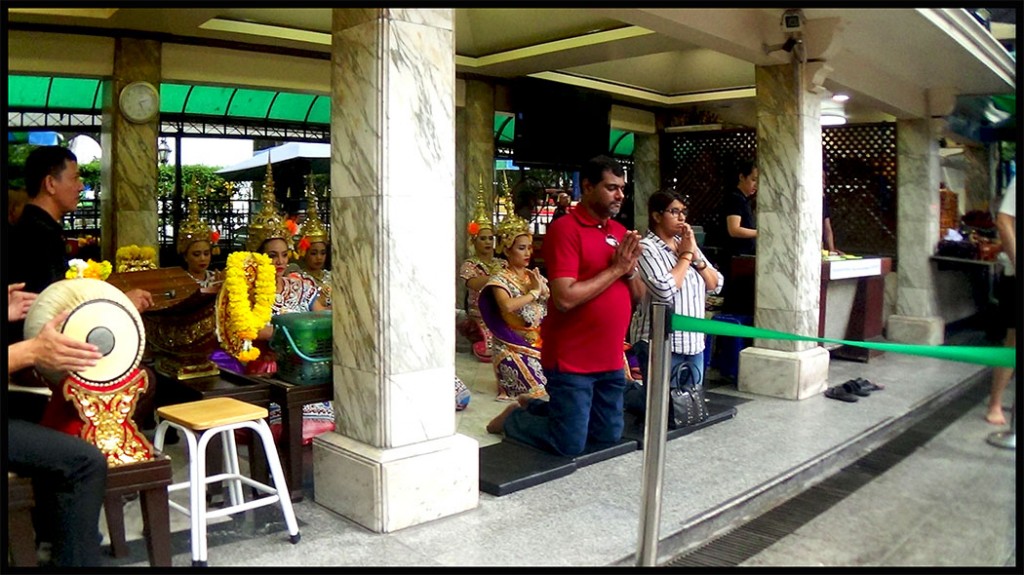
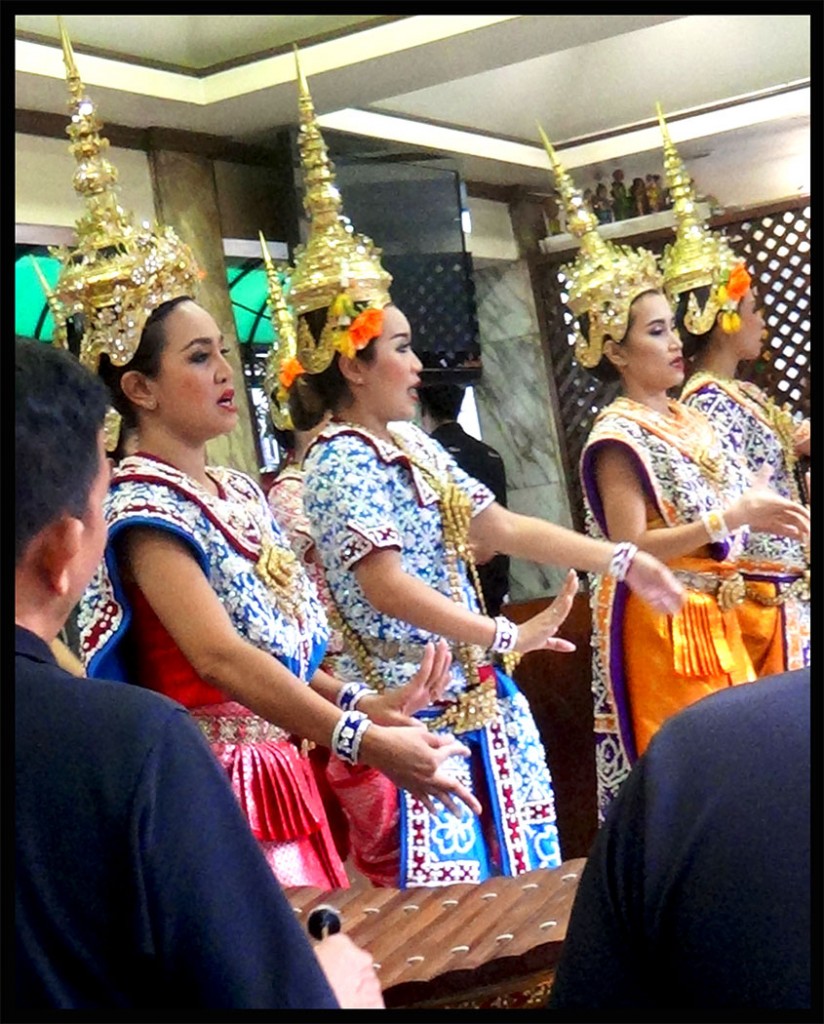
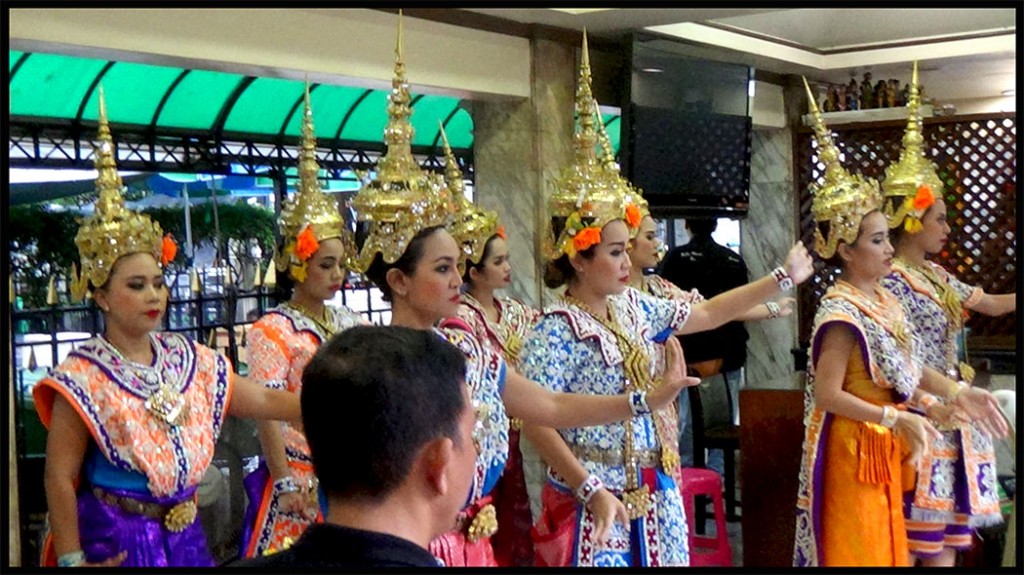
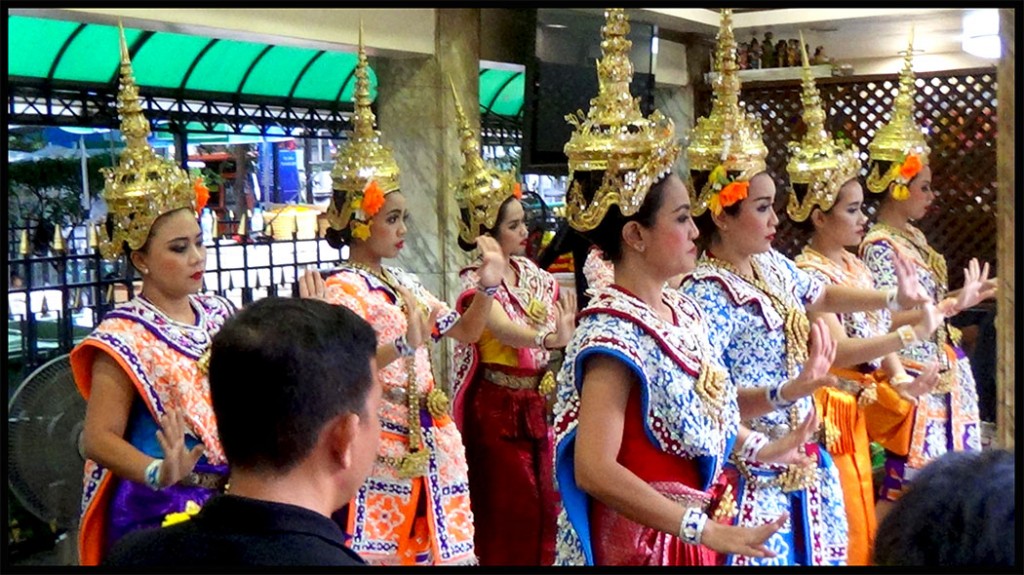
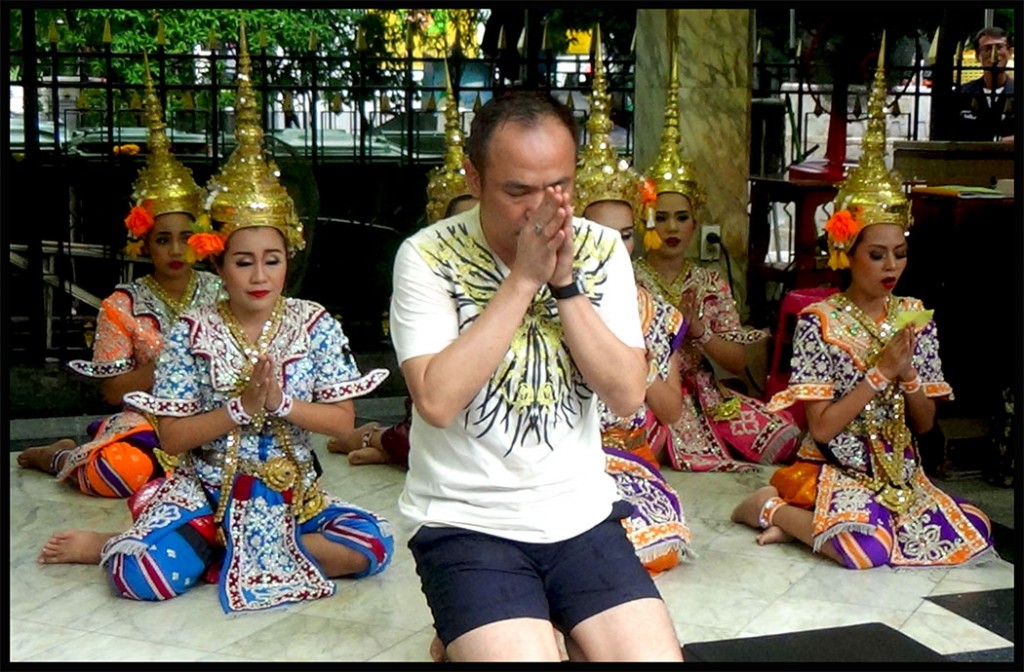
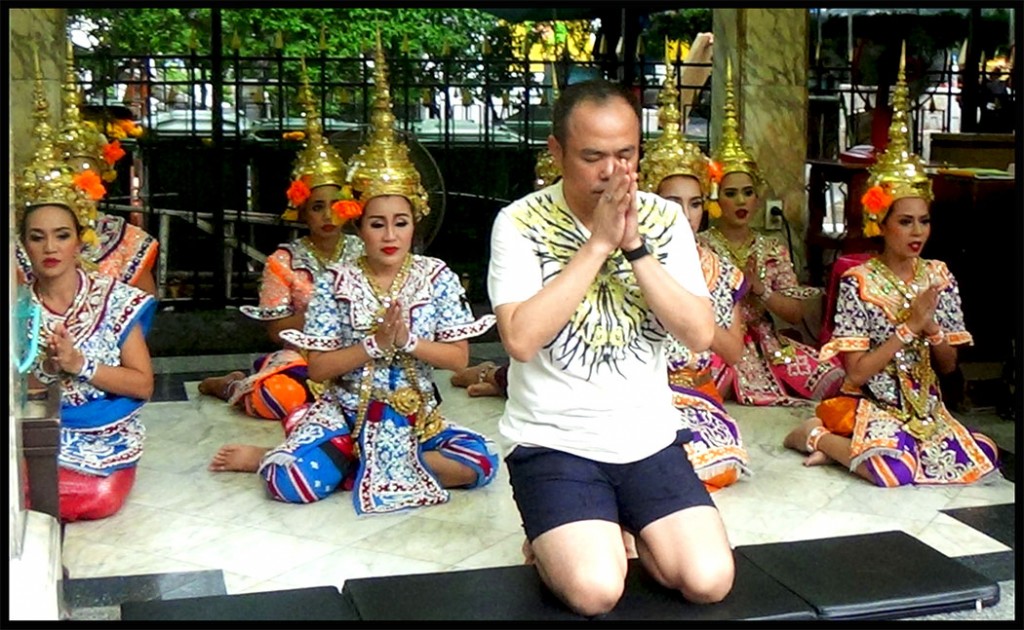
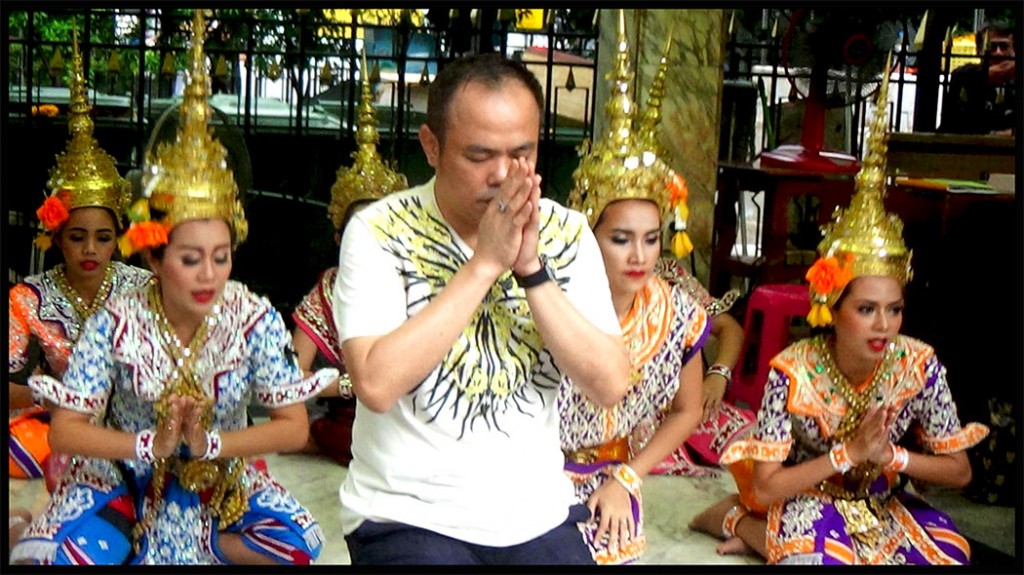
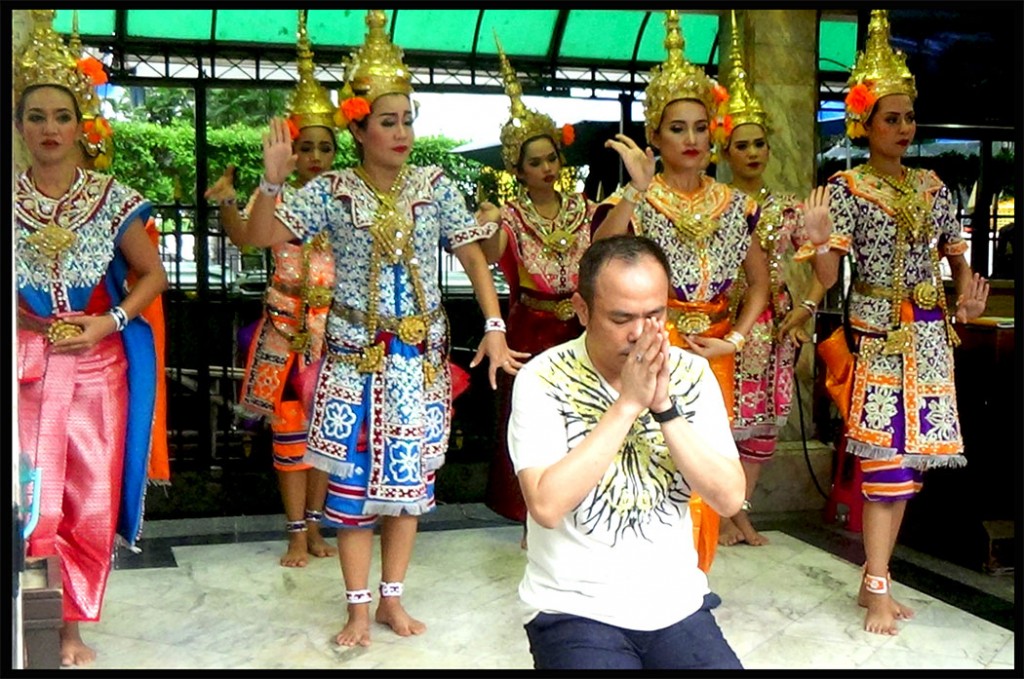
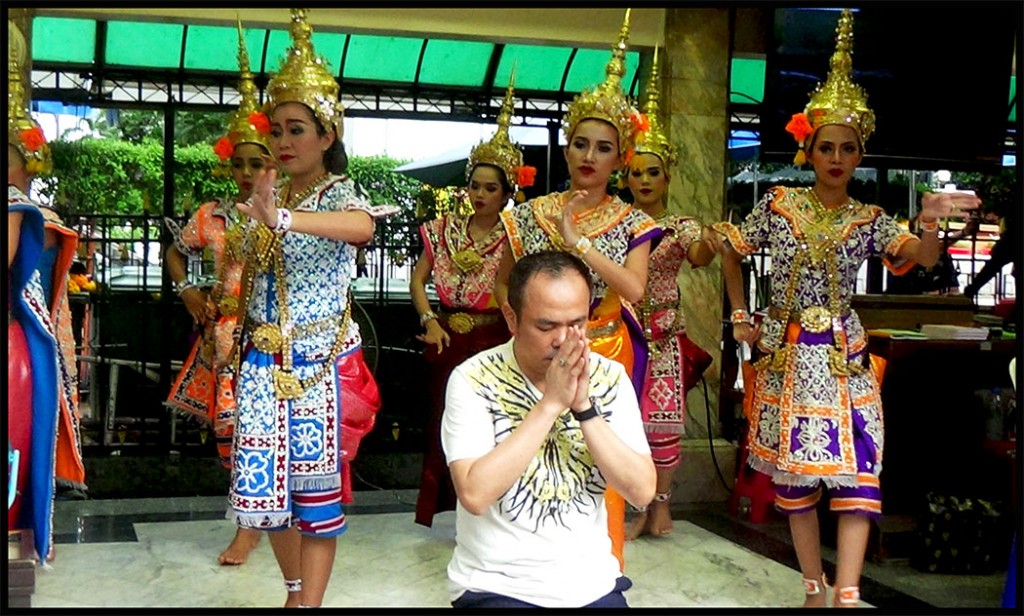

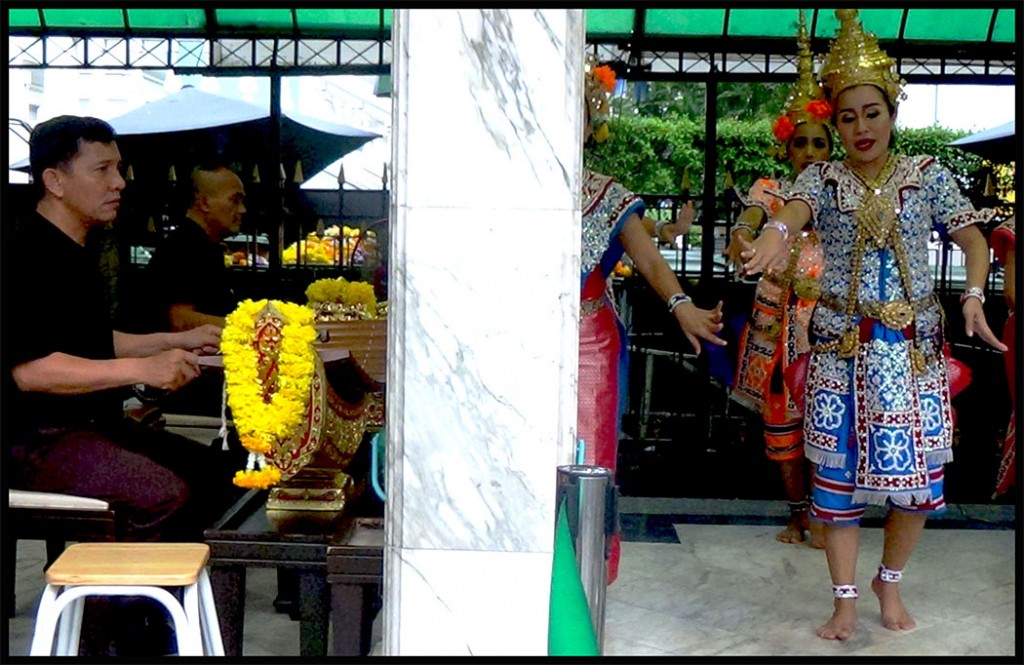
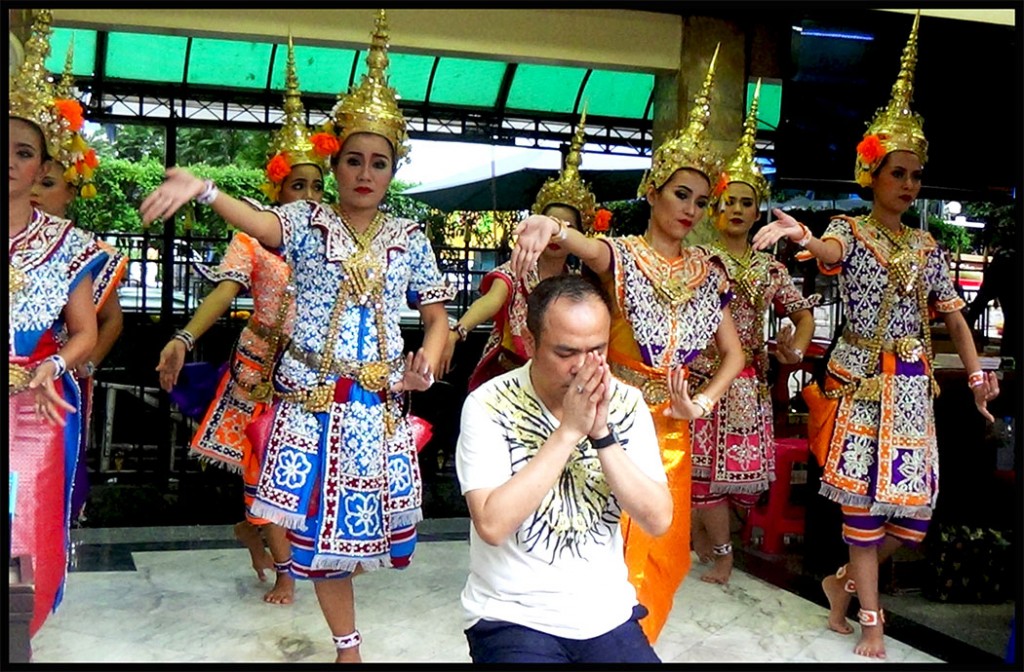
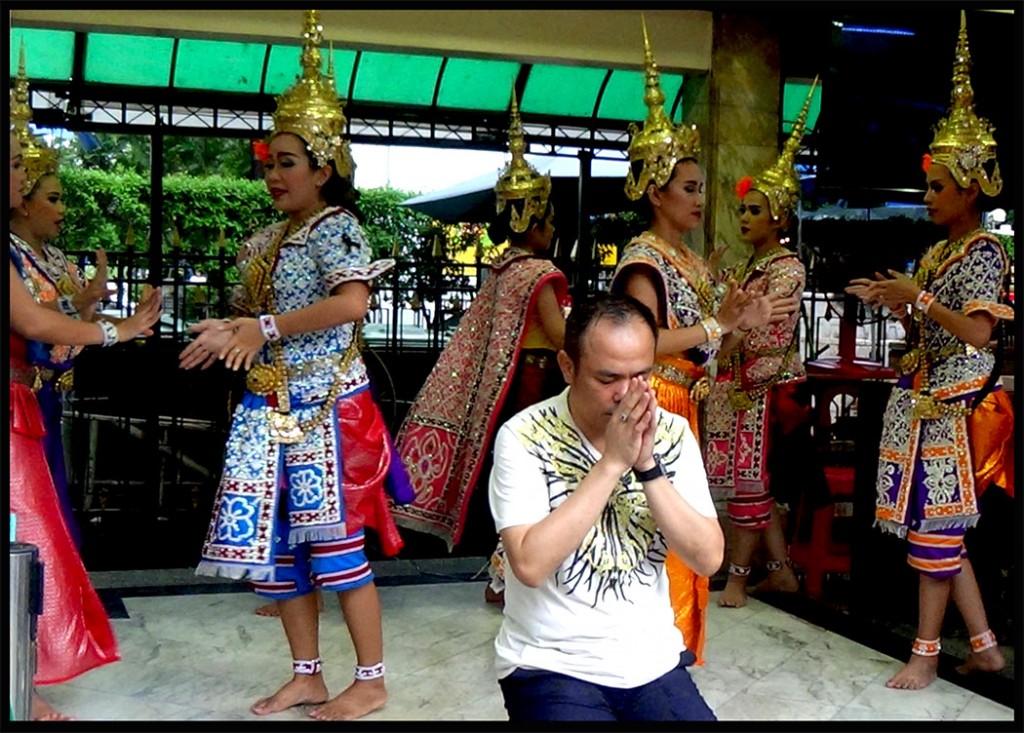

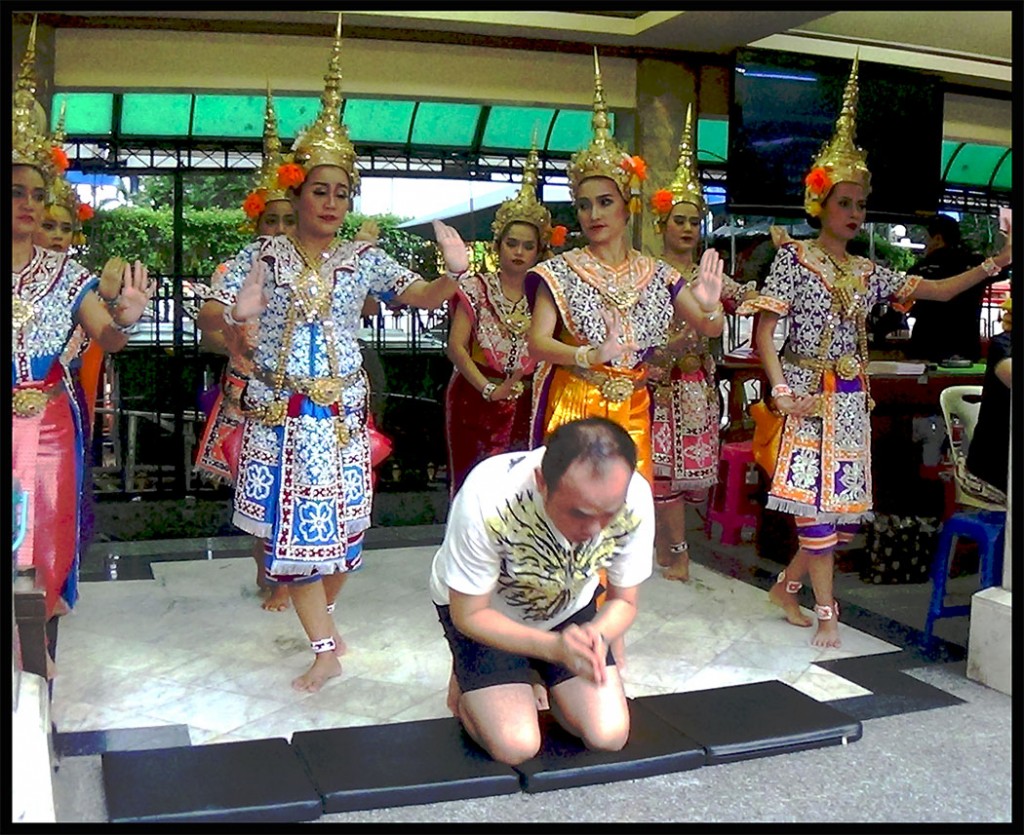

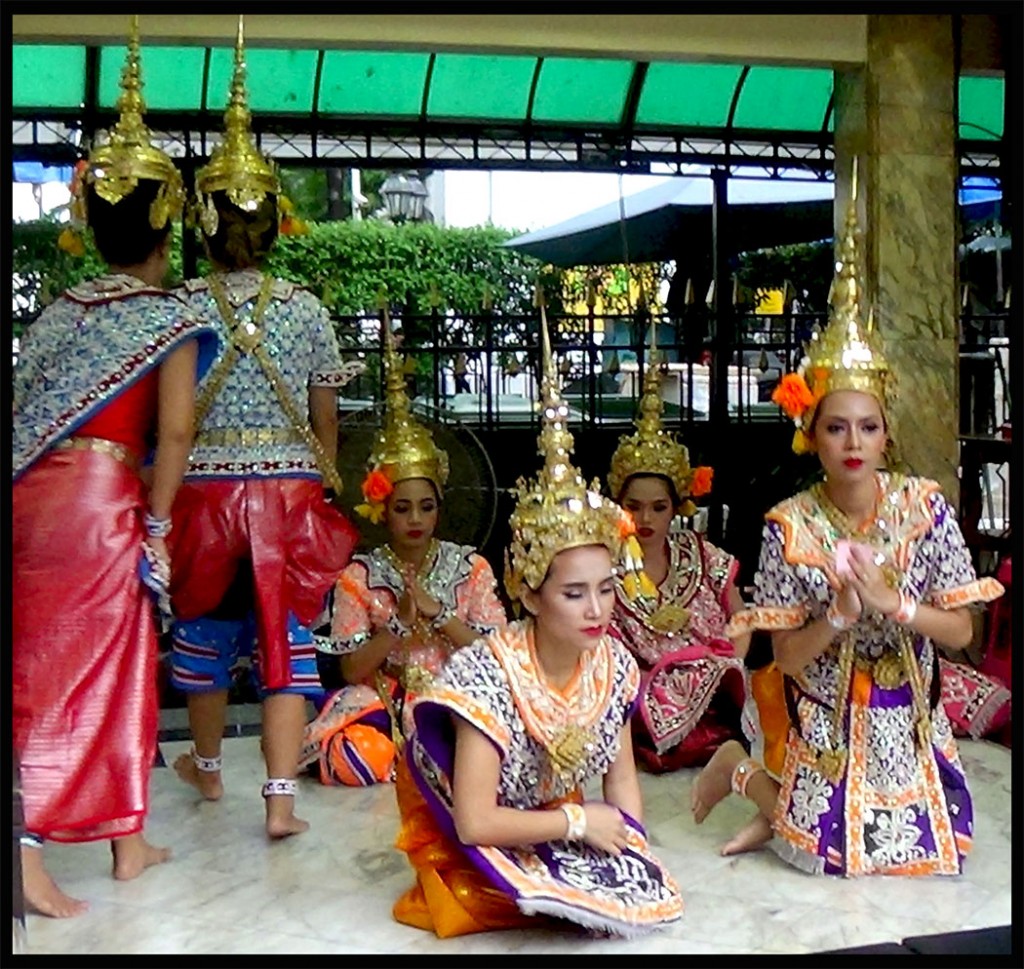

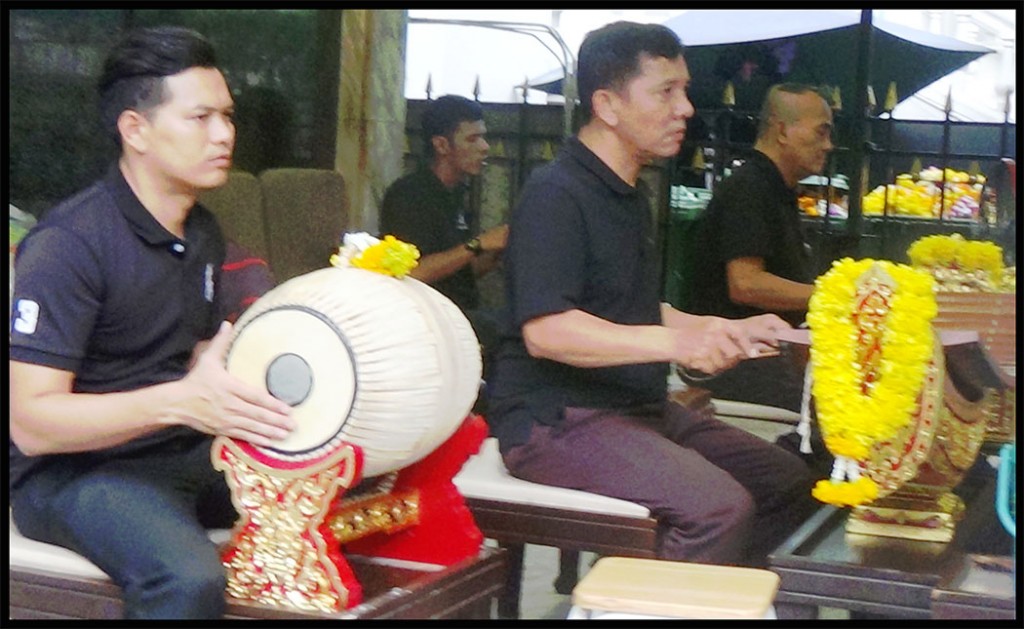
Leave a Reply